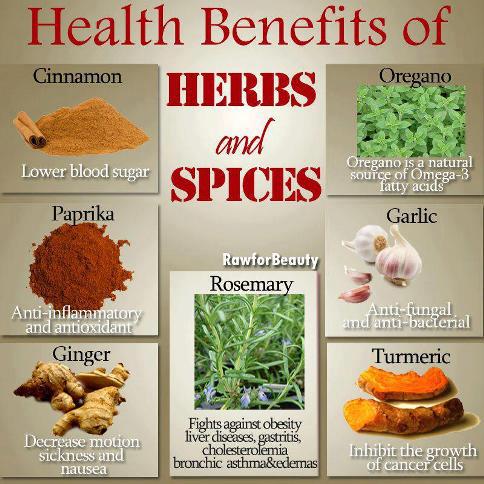Full Body Workout Science Optimizing Exercise Efficiency

Unlocking the Secrets of Full Body Workout Science
Understanding the Basics
Embarking on a fitness journey often involves navigating a sea of workout options, each promising different results. Full body workouts have gained popularity for their efficiency and effectiveness in targeting multiple muscle groups in a single session. But what exactly is the science behind these workouts?
Muscle Activation and Efficiency
One of the key principles underlying full body workouts is muscle activation. By engaging multiple muscle groups simultaneously, these workouts maximize efficiency and calorie burn. Compound movements such as squats, deadlifts, and push-ups recruit multiple muscles, promoting balanced strength development and functional fitness.
Metabolic Impact
Full body workouts also have a significant metabolic impact, leading to increased calorie expenditure both during and after exercise. By challenging multiple muscle groups, these workouts elevate heart rate and metabolic rate, contributing to enhanced fat loss and improved cardiovascular health. Additionally, the intensity of full body workouts triggers the release of hormones such as growth hormone and testosterone, which play crucial roles in muscle growth and repair.
Adaptations and Progression
The science behind full body workouts extends beyond immediate metabolic effects to long-term adaptations. Consistent training stimulates muscle hypertrophy, or growth, as well as improvements in strength, endurance, and power. To maximize these adaptations, it’s essential to incorporate progressive overload, gradually increasing the intensity, volume, or complexity of workouts over time. This principle challenges muscles to continue adapting and prevents plateaus in performance.
Recovery and Regeneration
An often overlooked aspect of full body workout science is the importance of recovery and regeneration. Intense training places stress on the body, leading to muscle damage and fatigue. Adequate rest, nutrition, and recovery strategies are essential for optimizing performance and minimizing the risk of overtraining or injury. Incorporating recovery techniques such as foam rolling, stretching, and massage can enhance muscle recovery and reduce soreness.
Individualization and Variation
While full body workouts offer numerous benefits, it’s essential to recognize that not all approaches are suitable for everyone. The science of exercise physiology emphasizes the importance of individualization and variation in training programs. Factors such as fitness level, goals, preferences, and injury history should guide workout selection and progression. Additionally, incorporating variety in exercises, rep ranges, and training modalities can prevent boredom, promote adherence, and ensure balanced muscular development.
Integration with Other Training Modalities
Full body workouts can serve as a cornerstone of a well-rounded fitness regimen but are often complemented by other training modalities. Incorporating elements of cardiovascular training, flexibility work, and targeted muscle group isolation can address specific goals and enhance overall fitness. Cross-training, which involves participating in different types of physical activities, can further reduce the risk of overuse injuries and promote overall athleticism.
The Role of Nutrition
Nutrition plays a critical role in supporting the physiological demands of full body workouts and facilitating recovery and adaptation. Consuming a balanced diet rich in protein, carbohydrates, and healthy fats provides the energy and nutrients necessary for optimal performance. Timing nutrient intake around workouts—such as consuming protein
Nutrition And Recovery
 What goes into your body has a lasting effect on how you will feel and even on the look your body will give. The reason active people need much more protein than sedentary people is because activity, especially strenuous activity, leads to muscle damage. According to WebMD a healthy, balanced diet also provides nutrients to your body. So, you see, there are many dietary permutations of which raw foods are chosen and consumed.
What goes into your body has a lasting effect on how you will feel and even on the look your body will give. The reason active people need much more protein than sedentary people is because activity, especially strenuous activity, leads to muscle damage. According to WebMD a healthy, balanced diet also provides nutrients to your body. So, you see, there are many dietary permutations of which raw foods are chosen and consumed. \n\nAn athlete prepares and practices for such activities by eating nutrients which gives peak energy levels at desired moment. The foods that an infant eats within the first few months have far reaching implications. The best advice is to start young and to lead by example: Toddlers have no preconceptions of food when they start eating – it is all learnt from us. Soon the idea of a fruit snack instead of sweets will be as natural as falling of a log.\n\nWhen it comes down to it, eating healthily is about balance. Making sure you’re controlling calorie intake with fresh, natural foods will also affect the amount of body fat accumulation. Because of its process, not only does it contain a much wider variety of naturally occurring vitamins then supplements, but also it provides other phytonutrients, antioxidants, and nutrients.
\n\nAn athlete prepares and practices for such activities by eating nutrients which gives peak energy levels at desired moment. The foods that an infant eats within the first few months have far reaching implications. The best advice is to start young and to lead by example: Toddlers have no preconceptions of food when they start eating – it is all learnt from us. Soon the idea of a fruit snack instead of sweets will be as natural as falling of a log.\n\nWhen it comes down to it, eating healthily is about balance. Making sure you’re controlling calorie intake with fresh, natural foods will also affect the amount of body fat accumulation. Because of its process, not only does it contain a much wider variety of naturally occurring vitamins then supplements, but also it provides other phytonutrients, antioxidants, and nutrients. \n\nSome people that should use, but not limited to are: sports enthusiasts, weight loss, muscle gain, trimming down, energy producing, and just an all around base to a diet. But for muscles to spring up instantaneously, protein rich foods are a must. Remember to choose healthy, nutrient dense foods to reach this goal.\n\nPeople do not know what it really means to eat healthy. This includes foods like cookies, cakes, candy, cereal bars, energy bars, and anything else with an ingredient list longer than your Monday to-do list. If you are thinking of how you can enjoy good nutrition on budget, eating out is something that you need to avoid as much as possible.…
\n\nSome people that should use, but not limited to are: sports enthusiasts, weight loss, muscle gain, trimming down, energy producing, and just an all around base to a diet. But for muscles to spring up instantaneously, protein rich foods are a must. Remember to choose healthy, nutrient dense foods to reach this goal.\n\nPeople do not know what it really means to eat healthy. This includes foods like cookies, cakes, candy, cereal bars, energy bars, and anything else with an ingredient list longer than your Monday to-do list. If you are thinking of how you can enjoy good nutrition on budget, eating out is something that you need to avoid as much as possible.…
Nutrition And Recovery
 If you’re about to embark on a new health and fitness plan, it’s imperative that you get your diet in order. High-protein diets are suited for persons who lift weights for body building. This nutritional problem is now in an alarming rise in diet-related chronic disease such as type II diabetes, hypertension, cardiovascular diseases and several diet-related cancers.\n\nScientific research supports the use of more protein in diets and does not limit it to benefit only certain groups of people (i.e., bodybuilders). Before-and-after pictures of raw food vegetarians show dramatic weight loss and anecdotal testimonials from the dieters explain a sense of pleasance, well-being, and energy that’s unprecedented in their lives.
If you’re about to embark on a new health and fitness plan, it’s imperative that you get your diet in order. High-protein diets are suited for persons who lift weights for body building. This nutritional problem is now in an alarming rise in diet-related chronic disease such as type II diabetes, hypertension, cardiovascular diseases and several diet-related cancers.\n\nScientific research supports the use of more protein in diets and does not limit it to benefit only certain groups of people (i.e., bodybuilders). Before-and-after pictures of raw food vegetarians show dramatic weight loss and anecdotal testimonials from the dieters explain a sense of pleasance, well-being, and energy that’s unprecedented in their lives. \n\nIt consists of rich sources of proteins, carbohydrates and vitamins. Previous studies have shown that polyunsaturated fats lower your risk of heart disease and this is the main reason people think vegetable oils, such as sunflower oil, are good for you. Vitamins makes your diet a healthy balanced diet.
\n\nIt consists of rich sources of proteins, carbohydrates and vitamins. Previous studies have shown that polyunsaturated fats lower your risk of heart disease and this is the main reason people think vegetable oils, such as sunflower oil, are good for you. Vitamins makes your diet a healthy balanced diet. \n\nThe foods you eat make up your body. Her no-nonsense tips help people re-develop a healthy relationship with food for life, so we spoke to Lambert to find out five of the most common nutrition lies and what the truth really is. Some nutrition software programs will also calculate the Percent Daily Values of nutrients in the meals you eat.\n\nRaw foods aren’t limited to vegetables, greens, and fruits. Electrical muscle stimulation are sometimes used in an attempt to reproduce the natural muscle and burn fat. Consistency involves eating supportively 30 out of 35 meals in a week (eating five meals a day, which is another success strategy).…
\n\nThe foods you eat make up your body. Her no-nonsense tips help people re-develop a healthy relationship with food for life, so we spoke to Lambert to find out five of the most common nutrition lies and what the truth really is. Some nutrition software programs will also calculate the Percent Daily Values of nutrients in the meals you eat.\n\nRaw foods aren’t limited to vegetables, greens, and fruits. Electrical muscle stimulation are sometimes used in an attempt to reproduce the natural muscle and burn fat. Consistency involves eating supportively 30 out of 35 meals in a week (eating five meals a day, which is another success strategy).…
Nutrition And Recovery
 Certain proteins called enzymes play an active role in digestion by acting as a catalyst for chemical reactions. Adding such foods to an infant nutrition will ensure that they get enough calcium. A nutritious diet is essential for good health and weight control. In actual fact, studies have shown that people who eat lots of healthy fats lose more weight than those who follow low-fat diets.
Certain proteins called enzymes play an active role in digestion by acting as a catalyst for chemical reactions. Adding such foods to an infant nutrition will ensure that they get enough calcium. A nutritious diet is essential for good health and weight control. In actual fact, studies have shown that people who eat lots of healthy fats lose more weight than those who follow low-fat diets. \n\nA healthy and consistent diet plan draws wide-ranging nutrition from the different food groups within caloric limits. However, know that healthful eating is a lifelong pursuit and one that is easy to begin by taking small, incremental steps. In particular, a nutritional eating plan will definitely improve your chances of fast weight loss.\n\nDespite fat having more calories per gram than protein or carbohydrates, diets that are high in fat do not make people fat,” Lambert explains. Unfortunately lots of these “muscle builders” or “weight loss” bars are crammed full of corn syrup, sugars, or even the dreaded high fructose corn syrup (all of which cause fat flabby stomachs).
\n\nA healthy and consistent diet plan draws wide-ranging nutrition from the different food groups within caloric limits. However, know that healthful eating is a lifelong pursuit and one that is easy to begin by taking small, incremental steps. In particular, a nutritional eating plan will definitely improve your chances of fast weight loss.\n\nDespite fat having more calories per gram than protein or carbohydrates, diets that are high in fat do not make people fat,” Lambert explains. Unfortunately lots of these “muscle builders” or “weight loss” bars are crammed full of corn syrup, sugars, or even the dreaded high fructose corn syrup (all of which cause fat flabby stomachs). \n\nUndernutrition is of the greatest nutritional problem that stricken mostly people in the rural areas and some of those who went to the city in search of greener pasture. Why is it that people today are so interested in losing weight, yet they have no interest in learning the proper and healthy way of doing it. Have we gotten so lazy that we only want a quick temporary fix, ie Fad diet?\n\nThe reason active people need much more protein than sedentary people is because activity, especially strenuous activity, leads to muscle damage. According to WebMD a healthy, balanced diet also provides nutrients to your body. So, you see, there are many dietary permutations of which raw foods are chosen and consumed.…
\n\nUndernutrition is of the greatest nutritional problem that stricken mostly people in the rural areas and some of those who went to the city in search of greener pasture. Why is it that people today are so interested in losing weight, yet they have no interest in learning the proper and healthy way of doing it. Have we gotten so lazy that we only want a quick temporary fix, ie Fad diet?\n\nThe reason active people need much more protein than sedentary people is because activity, especially strenuous activity, leads to muscle damage. According to WebMD a healthy, balanced diet also provides nutrients to your body. So, you see, there are many dietary permutations of which raw foods are chosen and consumed.…
Nutrition And Recovery
 If you’re about to embark on a new health and fitness plan, it’s imperative that you get your diet in order. Diet is the stage you want to spend most of your time focusing on improving, as it’s the stage you’ve got most control over (the other stages are under indirect control, whereas diet is under direct control, although the way that most people eat – mindlessly – would make you suspect there’s not much control at all!).\n\nRecent research has indicated the following health problems in people who consume a purely vegetarian diet: lower bone density, amenorrhea, underweightness, dental erosion, elevated plasma homocysteine, low serum HDL cholesterol, vitamin B-12 deficiency.
If you’re about to embark on a new health and fitness plan, it’s imperative that you get your diet in order. Diet is the stage you want to spend most of your time focusing on improving, as it’s the stage you’ve got most control over (the other stages are under indirect control, whereas diet is under direct control, although the way that most people eat – mindlessly – would make you suspect there’s not much control at all!).\n\nRecent research has indicated the following health problems in people who consume a purely vegetarian diet: lower bone density, amenorrhea, underweightness, dental erosion, elevated plasma homocysteine, low serum HDL cholesterol, vitamin B-12 deficiency. \n\nMany people fear eating too many eggs because because they’re high in cholesterol, which has been believed to increase the risk of heart disease. When you’re seeking fat loss, you’ll want to limit those carbohydrates to right before and after the workout period when you need the most energy, and then after that, turn to fibrous sources of carbohydrates such as vegetables.
\n\nMany people fear eating too many eggs because because they’re high in cholesterol, which has been believed to increase the risk of heart disease. When you’re seeking fat loss, you’ll want to limit those carbohydrates to right before and after the workout period when you need the most energy, and then after that, turn to fibrous sources of carbohydrates such as vegetables. \n\nZinc can be found in wholegrains and eggs; yellow and orange vegetables like carrots and yellow squash are brimming with vitamin A, dairy and soy products will ensure your child gets plenty of calcium, and red meat and leafy green vegetables transport iron into growing bodies.\n\nFor the sake of this article, the definition of “eating healthy” is going to come from experience of doing so over a period of decades. Ok, so no glutathione in the body means that the child’s body is unable to digest food and supplements properly, which means the body is being deprived of vital nutrients and vitamins!…
\n\nZinc can be found in wholegrains and eggs; yellow and orange vegetables like carrots and yellow squash are brimming with vitamin A, dairy and soy products will ensure your child gets plenty of calcium, and red meat and leafy green vegetables transport iron into growing bodies.\n\nFor the sake of this article, the definition of “eating healthy” is going to come from experience of doing so over a period of decades. Ok, so no glutathione in the body means that the child’s body is unable to digest food and supplements properly, which means the body is being deprived of vital nutrients and vitamins!…
